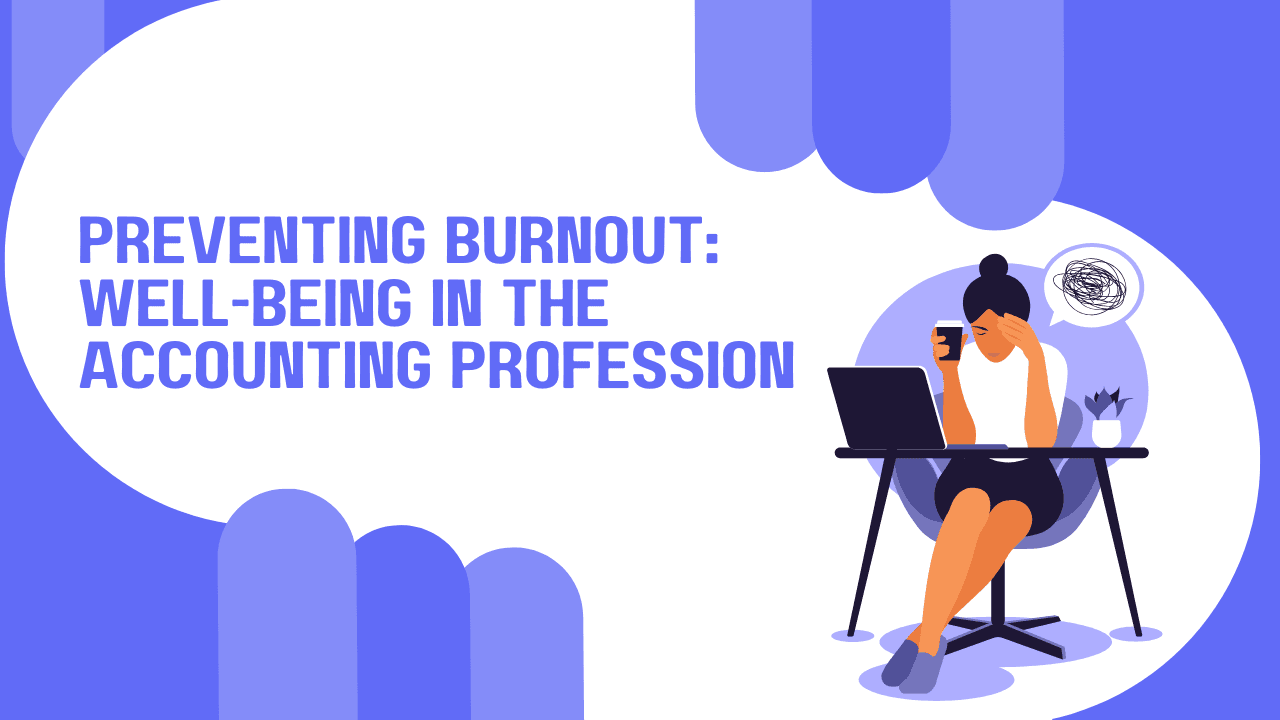Accountants in Australia and New Zealand live inside hard deadlines, shifting standards, and multi-client context switching. Burnout arrives gradually, fatigue, shorter attention, rising rework, then suddenly, as quality slips when it matters most.
According to Global Talent Trends 2023, across 8,405 accountants worldwide, 61% say their mental health suffers because of work pressures and 71% want more support—making structured CPD on time, ethics and leadership a risk-management priority, not a nice-to-have.
The fix isn’t more hours. It’s redesigning how work happens and using verifiable CPD to make those redesigns stick.
CPD as a burnout buffer
Well-chosen, verifiable CPD reduces load: workflow design trims hours, resilience training preserves focus, and ethics frameworks support decisions when fatigue peaks. Research by Mark, Gudith and Klocke shows that interruptions increase speed pressure and stress, degrading judgment under load. Research syntheses—such as a systematic review of checklists—also find that concise pre-submission checklists cut human error and missed steps.
It also signals to your firm and regulators that you’re managing professional risk with evidence. Start with time-boxing and clearer scoping to lighten the load, anchor escalation and ethics to safeguard decisions, and build communication and leadership to reduce churn. If you lead a team, consider Productivity & Well-Being for Leaders, a one-hour on-demand course that provides practical structures to prevent fire drills and protect focus.
What counts as verifiable CPD (AU & NZ)
Both CA ANZ and CPA Australia recognise professional capabilities beyond technical topics.
- CA ANZ: At least 120 hours per triennium, including 90 verifiable and (from trienniums beginning 1 July 2024) 6 verifiable ethics hours; minimum 20 hours per year.
- CPA Australia: 120 hours per triennium, with 10 hours ethics per triennium and ≥2 verifiable ethics hours each year.
Time management, ethics, communication, leadership and well-being can all be verifiable CPD when supported by a certificate, assessed outcome, or artefact (e.g., a template, checklist, or SOP you created and applied). Keep certificates, short reflections, and artefacts together by quarter so you’re audit-ready.
To strengthen people-centred leadership under pressure, add the Emotionally Intelligent Leadership in an AI-Powered World course—it sharpens empathy and judgement when workload and tech complexity rise.
A CPD-backed system for avoiding burnout
1) Pinpoint pressure points.
Write down your top three friction sources you face weekly. Typical culprits: deadline compression, interruptions, manual reconciliations, unclear briefs. These become your learning objectives.
2) Build a 12-month plan you’ll actually use.
Create a 12-month calendar that balances technical and professional learning:
|
Quarter |
Focus Area |
Example Verifiable CPD Outcome |
|
Q1 |
Time & workload |
Apply time-boxing + weekly capacity reviews; produce a one-page “workload charter.” |
|
Q2 |
Automation & accuracy |
Replace two manual reconciliations with spreadsheet models/flows; document control checks. |
|
Q3 |
Resilience & focus |
Adopt 90/20 focused work cycles; implement a 2-minute “reset protocol” after interruptions. |
|
Q4 |
Ethics & leadership |
Run a pre-deadline “ethical risk review”; hold a 30-min team debrief to refine policies. |
Keep certificates, quiz results, and practical artefacts (e.g., your workload charter or control checklist) in your CPD file as audit-proof evidence.
3) Change structure, not effort.
Require minimum acceptance criteria for any new task (what, when, data owner). Publish a “definition of done” for common deliverables and use a short handover checklist. Small rules prevent last-minute scrambles.
4) Capture evidence automatically.
Attach the certificate, the artefact you shipped, and a two-line note on impact (e.g., “new intake brief cut rework by ~20% over two sprints”). File by quarter. Now your learning is useful and audit-proof.
For mindset and stamina in peak periods, add Lessons on Optimism & Resiliency: a practical reset that keeps judgment steady when the calendar doesn’t cooperate.
Tech and tooling that actually saves hours
Use a reconciliation template or macro for recurring journals, a period-close checklist that doubles as QA, and a shared Kanban board with WIP limits to expose overload early. Batch non-urgent email, escalate by exception, and use AI for first-pass drafting paired with a simple human review checklist. Tools are only helpful if they remove a step you repeat every month.
Ethics keeps judgement intact when energy drops
Fatigue narrows options. A 10-minute ethical risk check before a major filing—stakeholders, pressures, conflicts, documentation—widens them again. It protects independence and due care, and the checklist becomes verifiable CPD evidence.
Conclusion
Burnout isn’t inevitable. A targeted, verifiable CPD loop that reshapes workload, strengthens ethics, and builds resilient leadership will protect your health and sharpen output—without longer hours.
One flexible way to keep momentum: get broad access to leadership, resilience, ethics and technical courses—with certificates in one place—via the Unlimited Pass for AU & NZ accountants.
